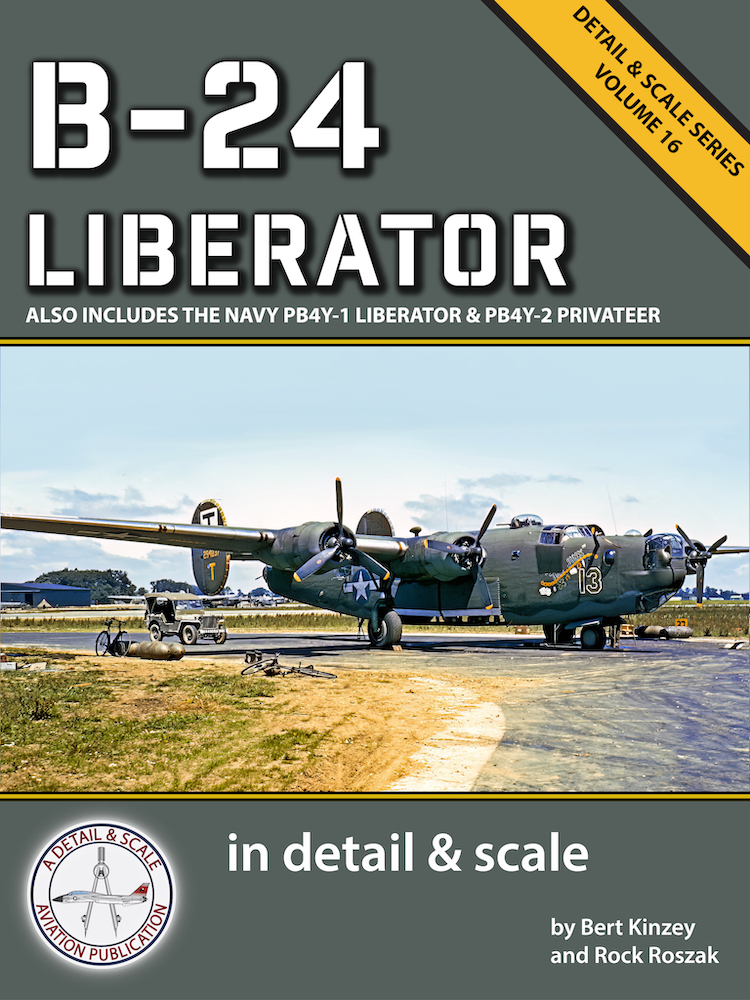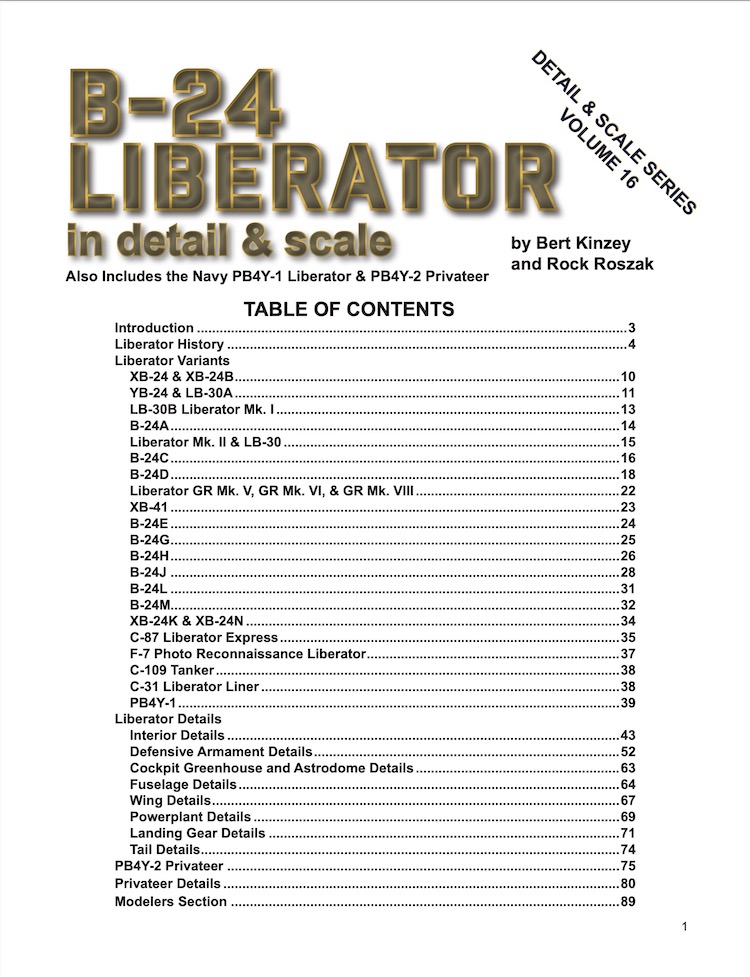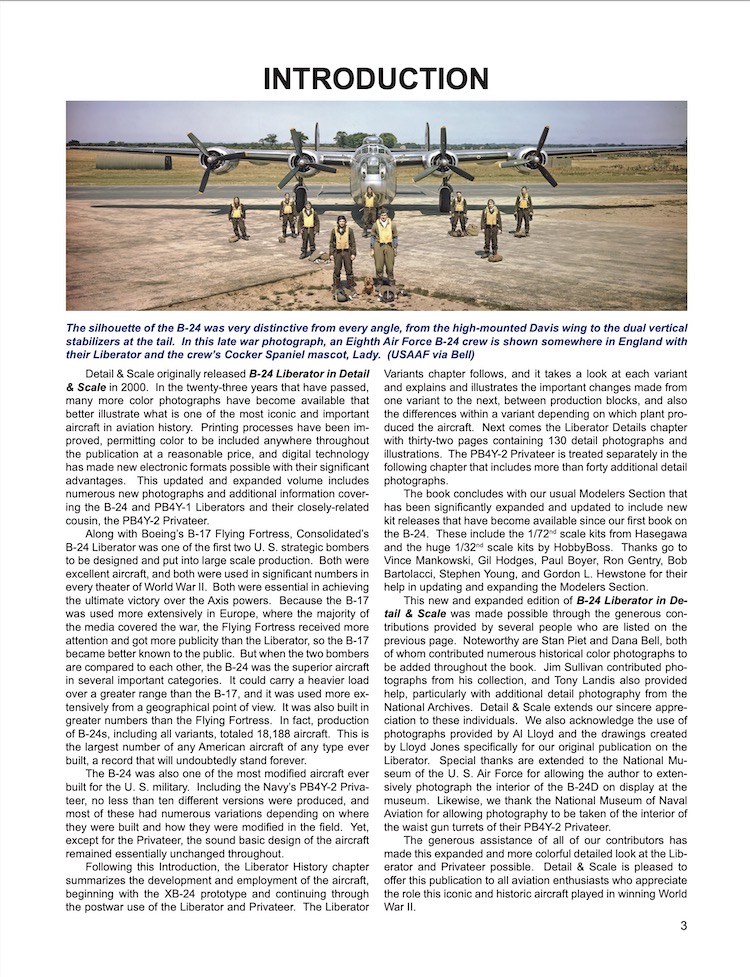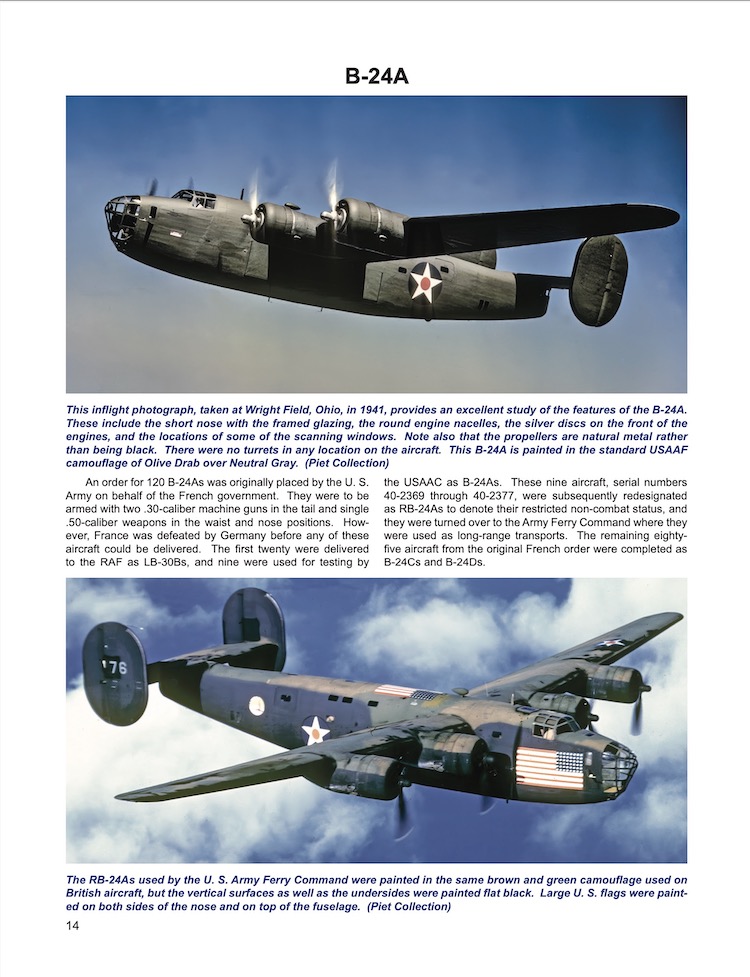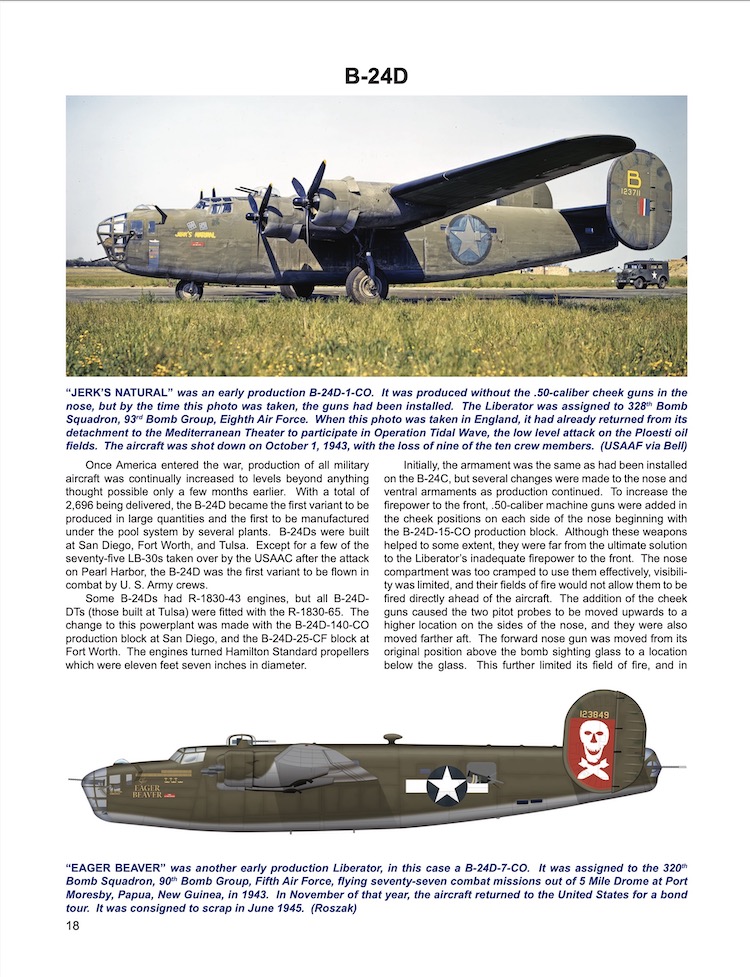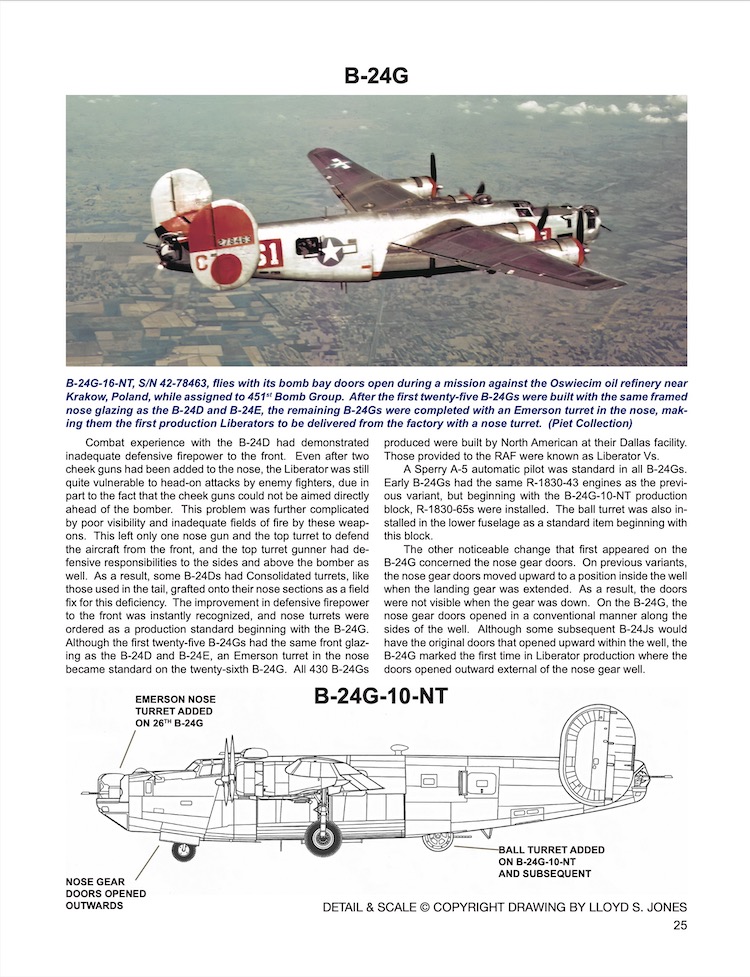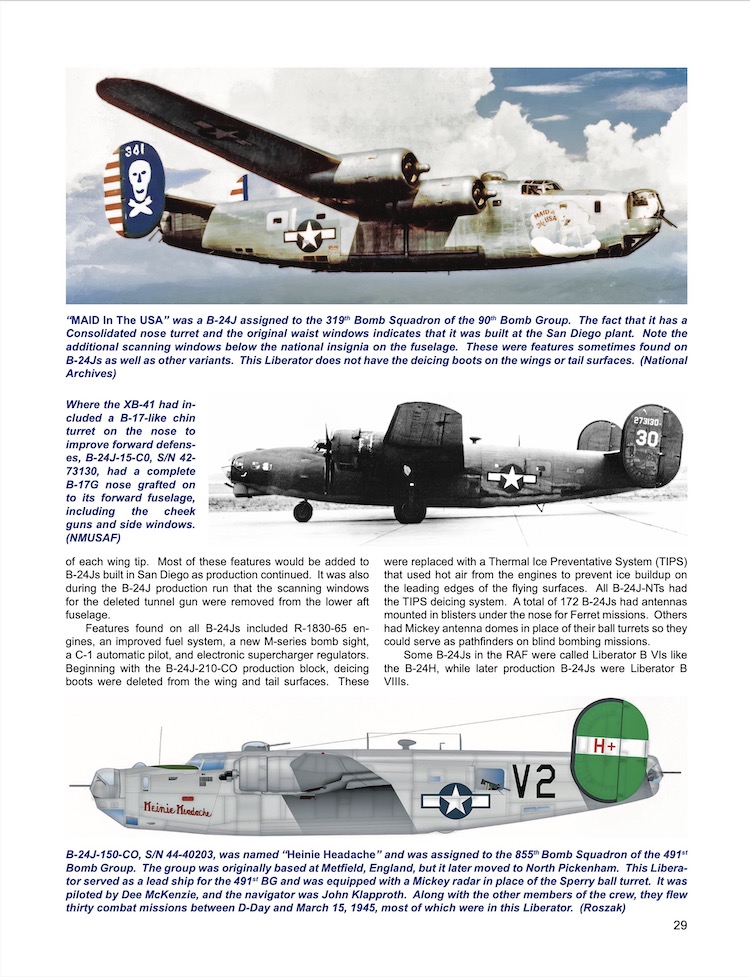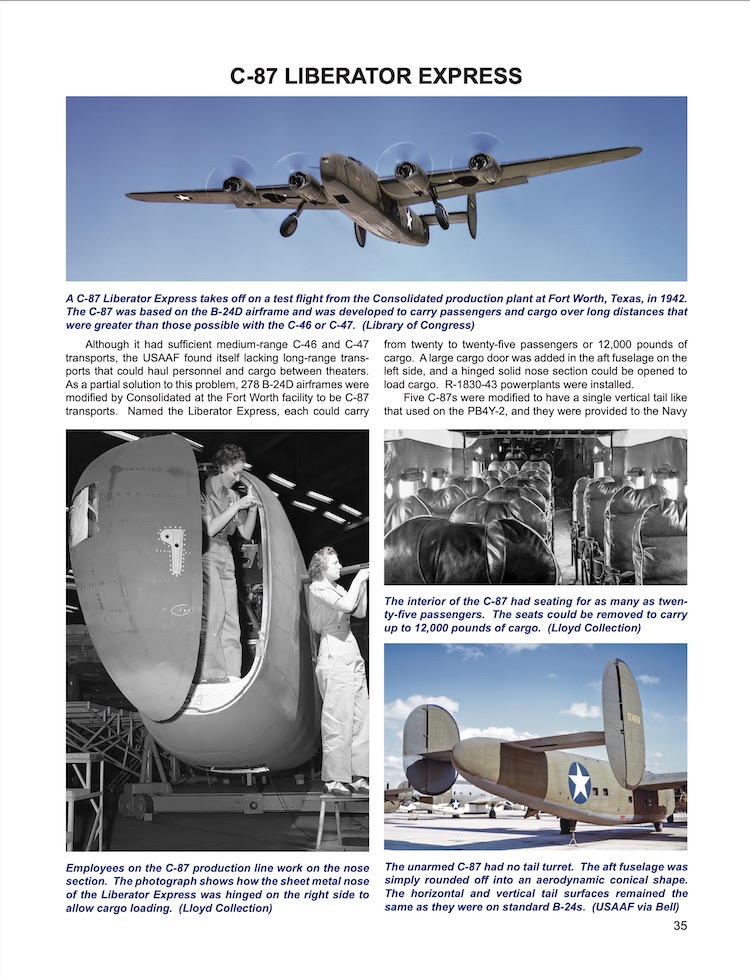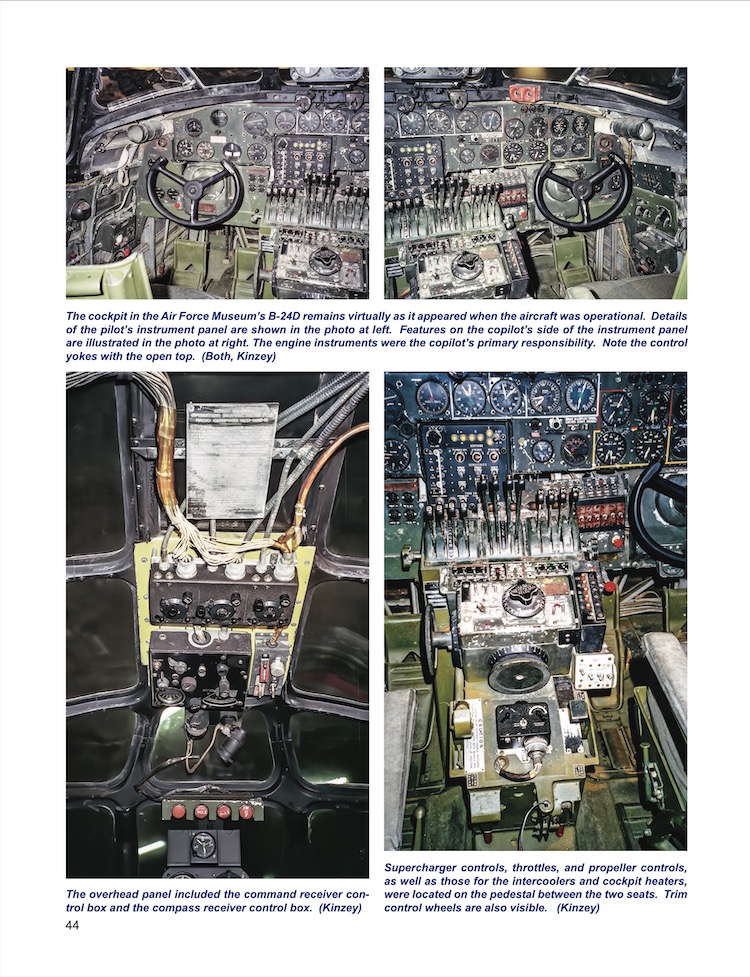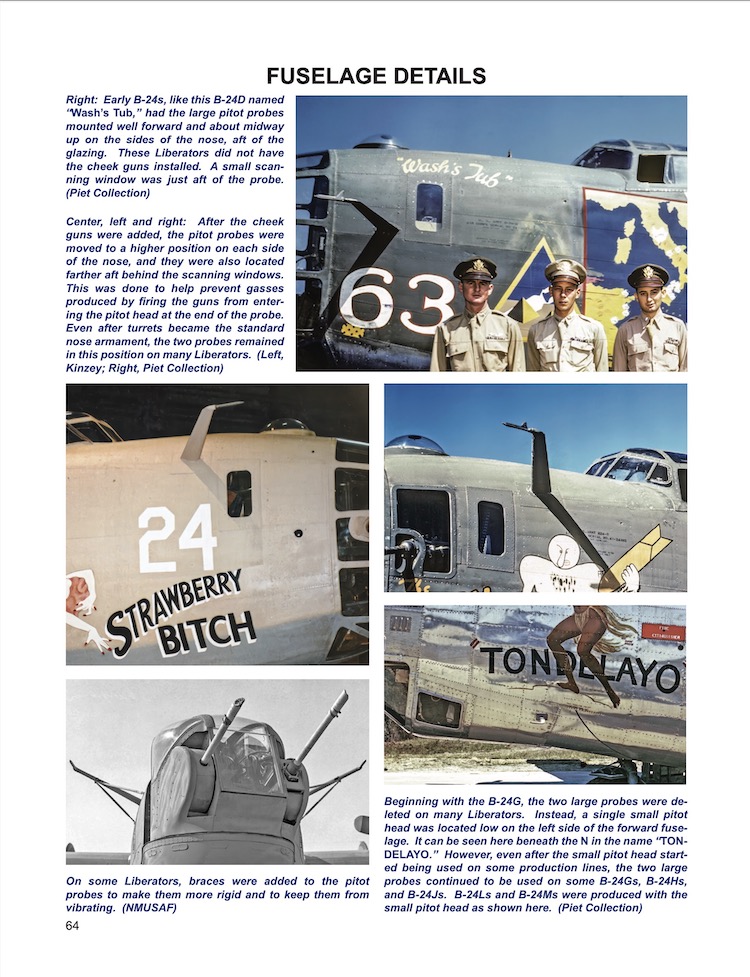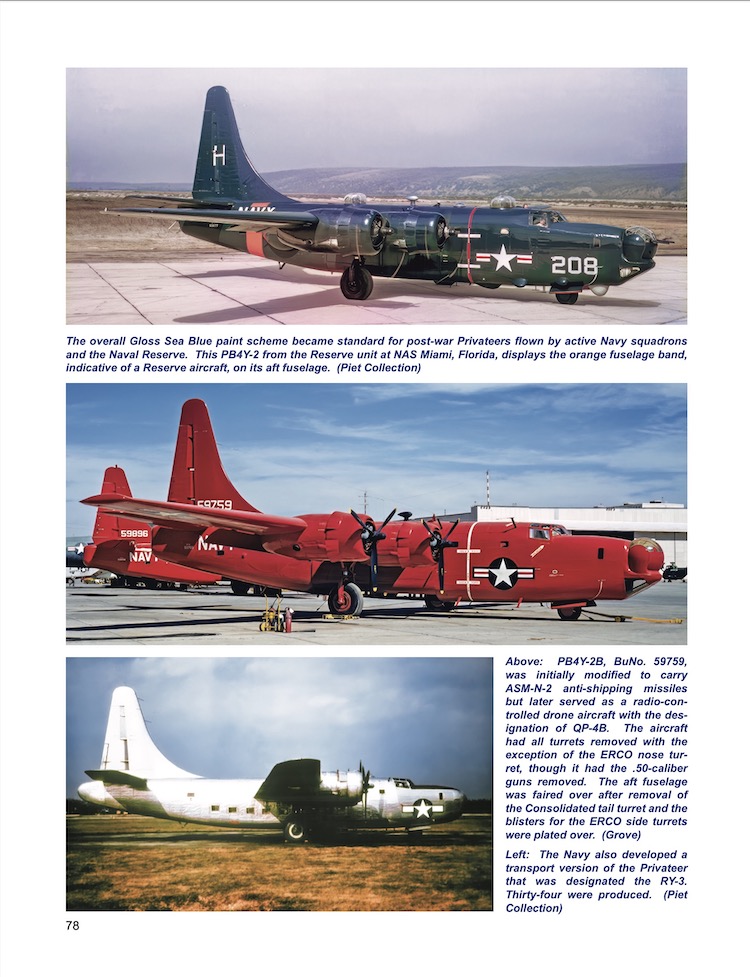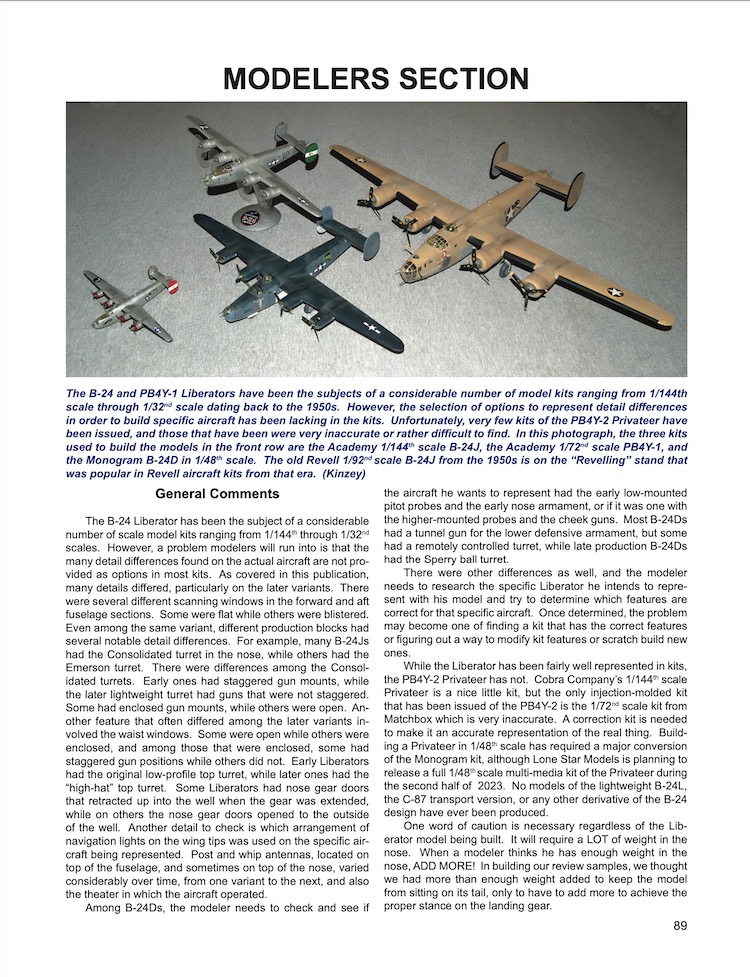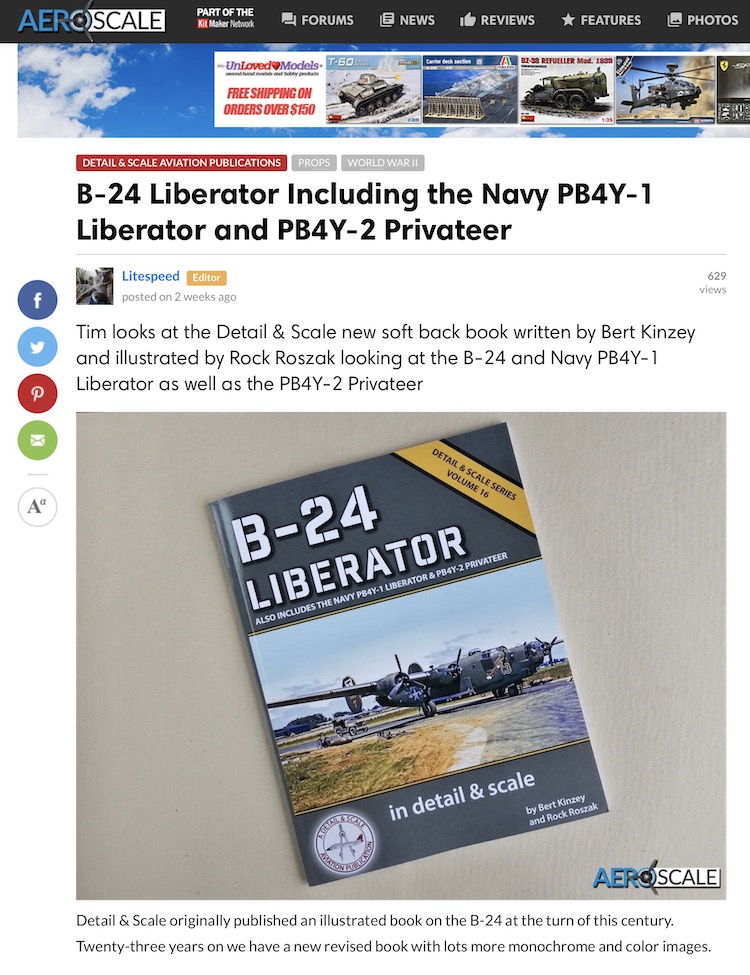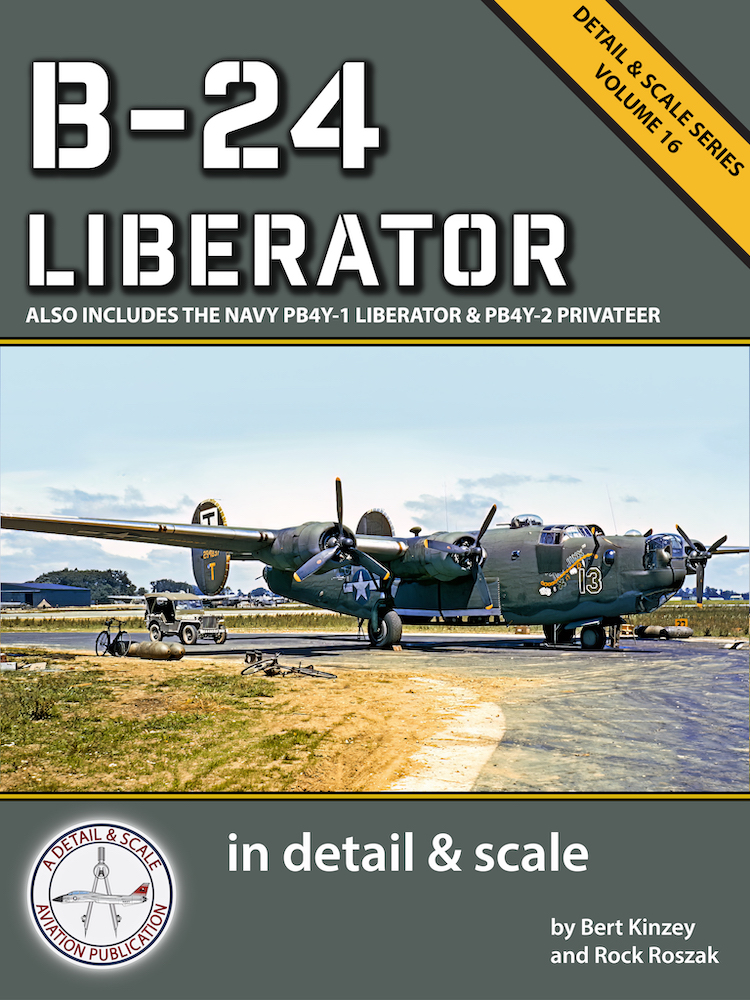
B-24 Liberator in Detail & Scale
Also Includes the Navy PB4Y-1 Liberator & PB4Y-2 Privateer
Book Features:
Detail & Scale originally released B-24 Liberator in Detail & Scale in 2000. In the twenty-three years that have passed, many more color photographs have become available that better illustrate what is one of the most iconic and important aircraft in aviation history. Printing processes have been improved, permitting color to be included anywhere throughout the publication at a reasonable price, and digital technology has made new electronic formats possible with their significant advantages. This updated and expanded volume includes numerous new photographs and additional information covering the B-24 and PB4Y-1 Liberators and their closely-related cousin, the PB4Y-2 Privateer.
Along with Boeing’s B-17 Flying Fortress, Consolidated’s B-24 Liberator was one of the first two U. S. strategic bombers to be designed and put into large scale production. Both were excellent aircraft, and both were used in significant numbers in every theater of World War II. Both were essential in achieving the ultimate victory over the Axis powers. Because the B-17 was used more extensively in Europe, where the majority of the media covered the war, the Flying Fortress received more attention and got more publicity than the Liberator, so the B-17 became better known to the public. But when the two bombers are compared to each other, the B-24 was the superior aircraft in several important categories. It could carry a heavier load over a greater range than the B-17, and it was used more extensively from a geographical point of view. It was also built in greater numbers than the Flying Fortress. In fact, production of B-24s, including all variants, totaled 18,188 aircraft. This is the largest number of any American aircraft of any type ever built, a record that will undoubtedly stand forever.
The B-24 was also one of the most modified aircraft ever built for the U. S. military. Including the Navy’s PB4Y-2 Privateer, no less than ten different versions were produced, and most of these had numerous variations depending on where they were built and how they were modified in the field. Yet, except for the Privateer, the sound basic design of the aircraft remained essentially unchanged throughout.
Following the Introduction, the Liberator History chapter summarizes the development and employment of the aircraft, beginning with the XB-24 prototype and continuing through the postwar use of the Liberator and Privateer. The Liberator Variants chapter follows, and it takes a look at each variant and explains and illustrates the important changes made from one variant to the next, between production blocks, and also the differences within a variant depending on which plant produced the aircraft. Next comes the Liberator Details chapter with thirty-two pages containing 130 detail photographs and illustrations. The PB4Y-2 Privateer is treated separately in the following chapter that includes more than forty additional detail photographs.
The book concludes with our usual Modelers Section that has been significantly expanded and updated to include new kit releases that have become available since our first book on the B-24. These include the 1/72nd scale kits from Hasegawa and the huge 1/32nd scale kits by HobbyBoss.
A DETAIL & SCALE SERIES BOOK
Print: 102 pages, 290 photos (163 in color), 12 illustrations, 6 color profiles
Digital: 149 pages, 290 photos (163 in color), 12 illustrations, 6 color profiles
Need a Kindle Reading App?
You can read the Kindle version of our books on Smartphones, Computers, Tablets and even a Cloud Reader where you can read our books in your web browser.
Digital: 149 pages, 290 photos (163 in color), 12 illustrations, 6 color profiles
Need the Apple iBook App?
You can read the iBook version of our book on the Apple iPad or on any Mac Computer.
Click here to go to the iTunes Store for the free download of the iBooks App.
Digital: 149 pages, 290 photos (163 in color), 12 illustrations, 6 color profiles
Need the Google Play eBook App?

